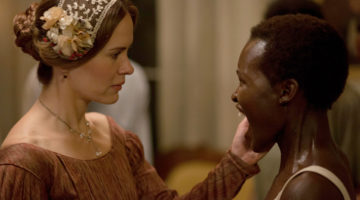Interview: ParaNorman directors Chris Butler and Sam Fell
A stop-motion animated movie featuring a slew of characters whose bodily proportions defy physics, and a protagonist that sees dead people, may be one of the most realistic movies on screen this year. Years in the making, with the prevailing goal of creating a believable world featuring relatable characters, all while being captivating, funny, challenging, and just a bit scary, for the young and the otherwise, ParaNorman comes to theatres this August with unparalleled authenticity.
The animation process itself is simply staggering, requiring meticulous attention to detail and the ability much of the time to work without a net: there is no really going back. LAIKA, the relatively young production company specializing in animation, and the group responsible for the much-acclaimed Coraline, return with ParaNorman, a film that was began while Coraline was still being made. Or rather, that’s when LAIKA signed on to it—writer and co-director Chris Butler had conceived of the script years before telling the plight of a young boy Norman ostracized by his friends and family for being weird.
Along with director Sam Fell, the pair led production of a film that included 10 years of writing, animators yielding at best a couple seconds of footage per day, and a race against puberty with their star young voice in Kodi Smit-McPhee. Scenes created in the movie were crafted reflecting real life movement and using references to make the clearly fabricated strangely normal.
It may be kid’s fiction, perhaps, or young adult entertainment, but it neither speaks down to children nor placates parents. In that, there even more realism, as the two creators discussed in the lead-up to a curious August release.
“The wrapping is horror: kids like scares, and we put in scares that they can handle, but it’s very heartfelt and funny,” said Fell, a father himself. Butler, admittedly and endearing a grown-up with a childlike perspective, added “we think of kids as sophisticated, complex creatures.”
“This includes them having sexual thoughts, violent thoughts,” he added, references some of the tension between characters as well as the prevailing morbid subject matter and Norman’s childlike obsession with zombies and horror films.
Fell suggests children know far more than their parents think they know, while Butler adds that maybe parents realize, but they just want to ignore. “I prefer a film that has something to say, I prefer challenging,” adds Butler.
ParaNorman may be a bit lighter than its 3D stop-motion predecessor in Coraline, a film that offered much in the form of bizarre and unsettling, but it quickly establishes a world that is familiar, even if the characters are clearly exaggerated, as a way to subvert expectations of people. It is a world that cannot be denied, from the gutters and white picket fences that adorn the neighbourhood, to the pencils stuck in the ceiling of the school’s bathroom.
When you become immersed into the world, as Butler explains, you are more accepting of the paranormal and more engaged with the characters. You also become compliant.
“The theme is to not judge a book by its cover,” he says. “Every character makes a judgment on someone else, and we kind of make the audience a part of that too, dressing the film up as horror and delivering something of a roller coaster ride; a fun and spooky and touching movie.”
Set in New England, an area ripe with history fascinating and horrific of which the film refers, and with schools and buildings nodding to their real-life counterparts, ParaNorman is visually striking, making the commonplace lush and strangely captivating, from Norman brushing his teeth and combing his hair, to simply yet eerie forests and cemeteries.
“We just made an ordinary world,” says Fell. “We crafted beautifully an old, ordinary world, with roughage and broken bicycles. We give screen time to things that would usually be thrown away; we wanted to find humour and character in incidental detail.”
“That’s the real world.”





